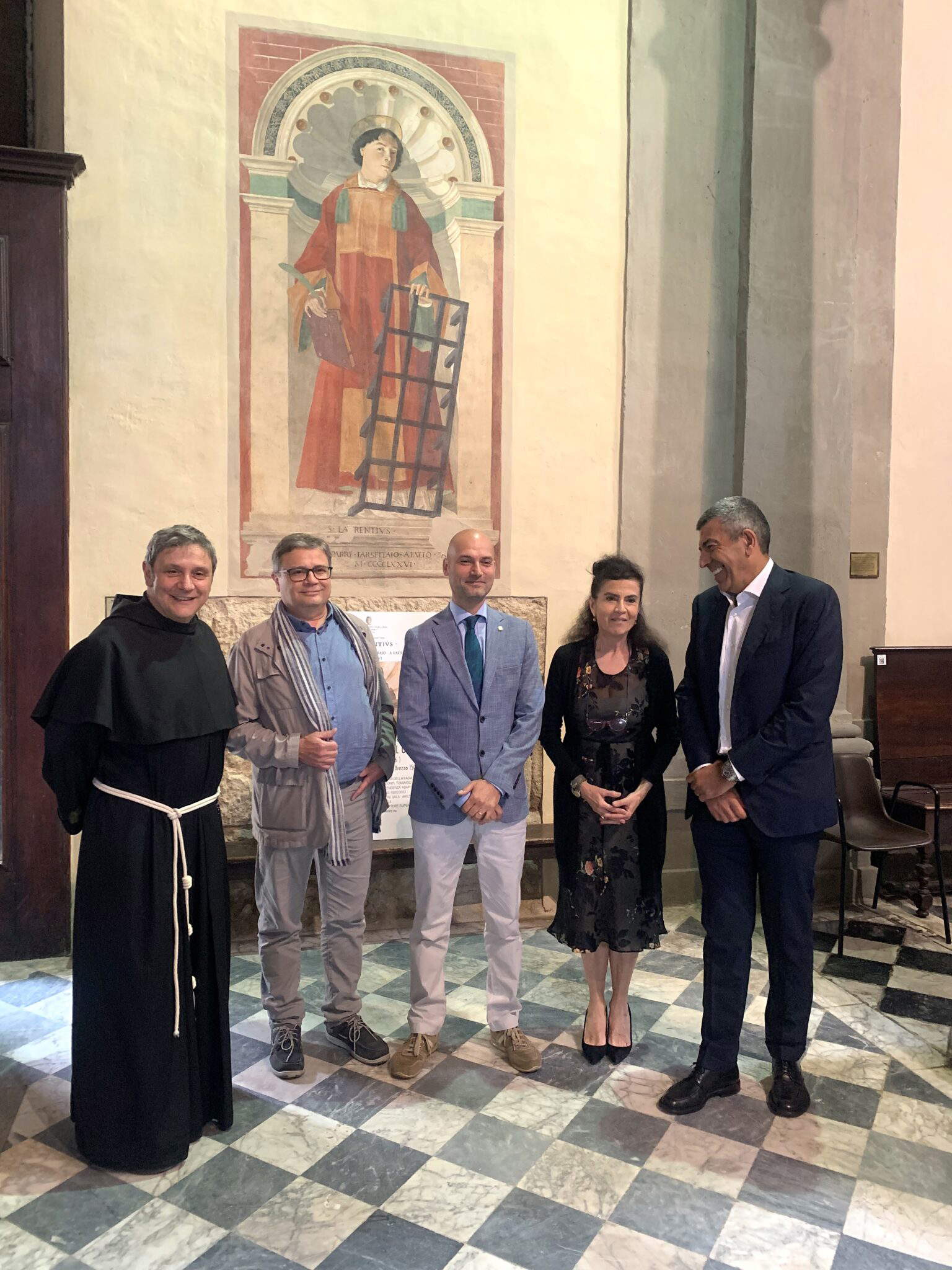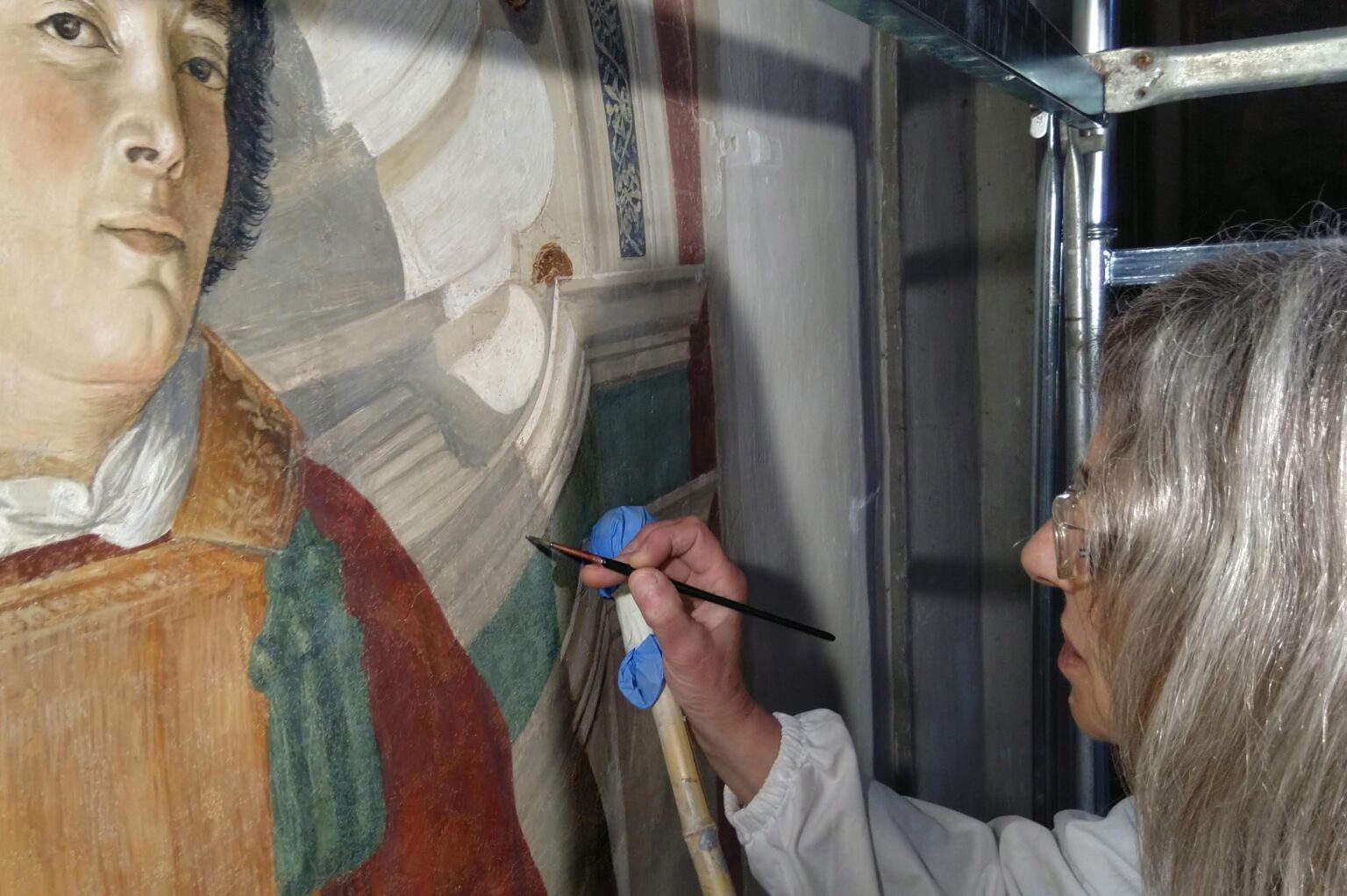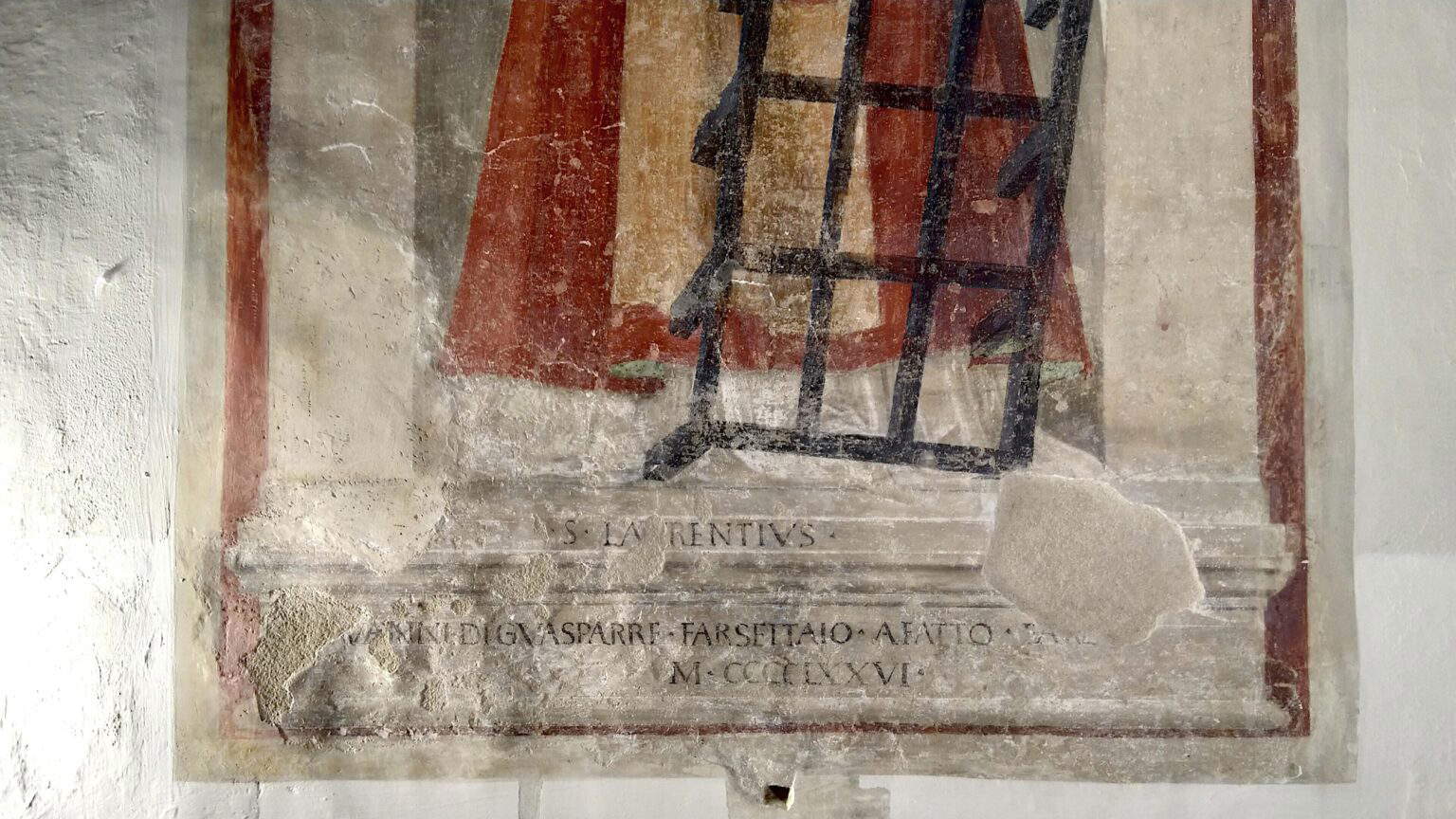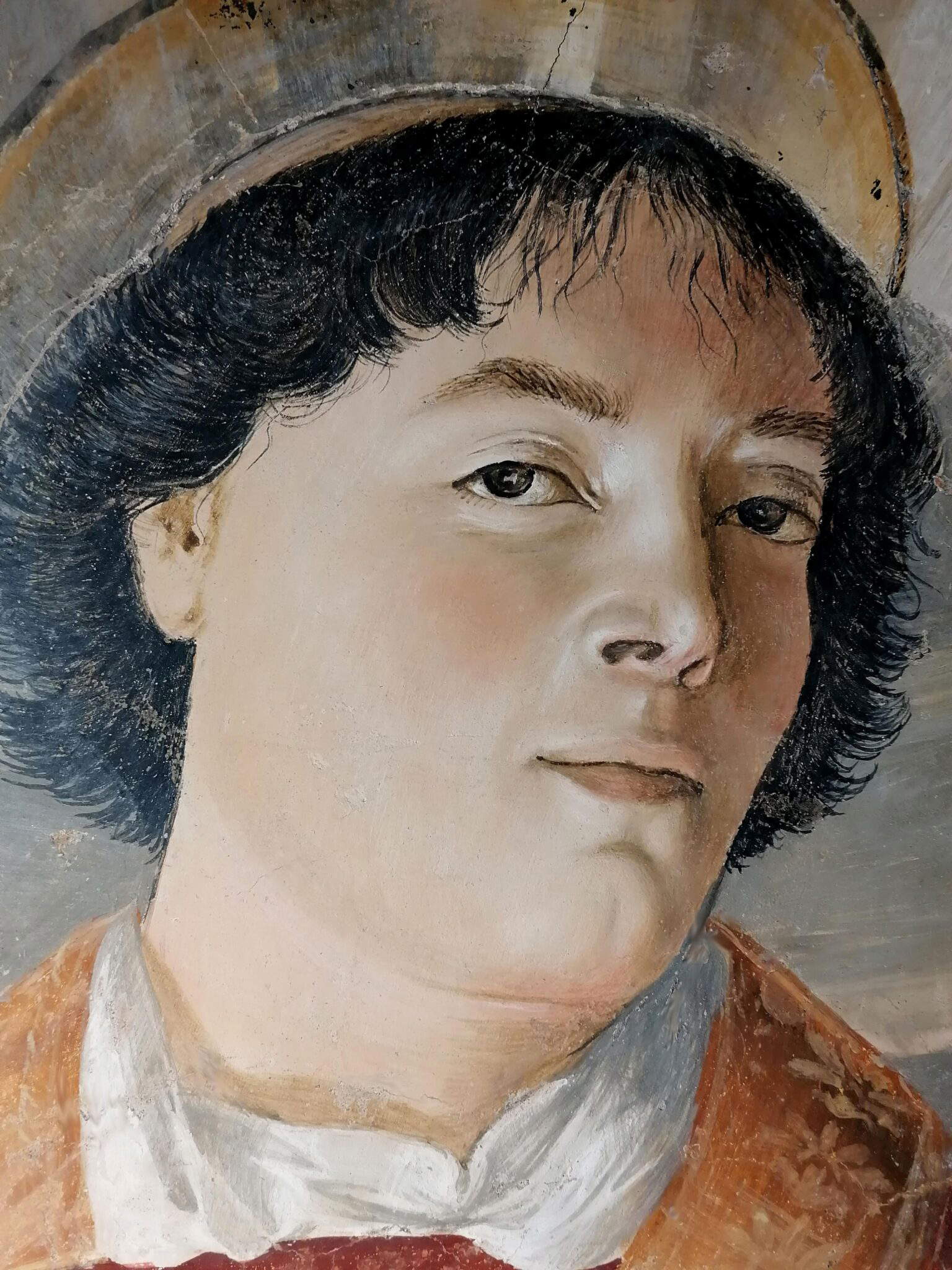Important restoration for the San Lorenzo fresco by Bartolomeo della Gatta (Pietro di Antonio Dei; Florence, 1448 - Arezzo, 1502) in the Badia delle Sante Flora e Lucilla in Arezzo. The restoration, financed by the Rotary Club of Arezzo East and carried out under the supervision of the APAP Superintendency of Siena Grosseto Arezzo by Tiziana Conti and Tommaso Sensini of Studio Tre Arezzo, thanks to the contribution of Chimet Spa.
The fresco with St. Lawrence, which dates back to 1476, is the first work that has come down to us executed by Bartolomeo in Arezzo and must have been part of a larger decoration, as Vasari indicates in his biography of the Camaldolese. Indeed, Vasari writes: “in the Badia di Santa Fiore di detta città [Arezzo] di sua mano una cappella all’entrare della chiesa per la porta principale entro la quale è un San Benedetto e altri santi fatti con molto grazia e con buona pratica e dolcezza.”
However, the San Lorenzo appears to be isolated, born as an ex voto, and perhaps the sacellum described by Vasari was on the opposite side, still in the counter-facade wall, beyond the ancient Gothic portal visible today. It can be assumed that the chapel was between the original portal and the San Lorenzo. The church was completely renovated by Vasari beginning in 1565. The fresco testifies to Bartolomeo’s youthful adherence to the lesson of Piero della Francesca, as well as the influence of Domenico Ghirlandaio as well. Compared to Ghirlandaio’s youthful frescoes of Cecina, one element of comparison is the brick wall motif. The saint is depicted within a painted niche, and perfect is the play of light. Beautiful is the face, an example of naturalistic adherence to life as well as characterized by an extraordinary intensity of expression.
Piero di Antonio Dei, known as Bartolomeo della Gatta, was one of the most important personalities of the second half of the 15th century. Born in Florence, he was the son of the goldsmith Antonio di Giovanni Dei, became a Camaldolese monk around the 1950s, and his membership in the order of San Romualdo is indicated by Vasari. The life that the great Arezzo man devoted to “Don Bartolomeo Abbate di San Clemente miniatore e pittore” constitutes the start of a historiographical fortune that has recently seen the compilation of a monograph by Cecilia Martelli. In his early twenties Bartholomew left Florence to move to Arezzo, and on January 12, 1471, he is attested at Santa Maria in Gradi.
“From its discovery in 1933 to the present day,” says art historian Liletta Fornasari, “the fresco has been the subject of several restorations, but despite this it was in poor condition. The degradation was caused first of all by capillary humidity that reached more than half the height of the painting, causing sulfate efflorescence and damaging the pictorial layers. Without this providential intervention, the fresco would have been ruined.”
The intervention, in addition to removing deposits and salt patina and lightening the out-of-tone additions, freed the underlying portion of the wall from the plaster layers to prevent moisture from rising, and proceeded to plaster and chromatically integrate missing and abraded paint.
“The Rotary Club of Arezzo East has always been attentive to the infinite artistic and cultural beauty of our city,” says Francesco Pugi, president of the Rotary Club of Arezzo East. “This is why, in the 50th year since its founding, it wanted to promote the recovery of this wonderful fresco by Bartolomeo della Gatta that was in serious danger of being permanently lost. We are therefore proud to have succeeded in restoring this admirable work to its former glory and returning it to the citizens and tourists visiting Arezzo, who will now be able to admire it in its new guise.”
“Chimet is proud to have contributed to this restoration,” said Luca Benvenuti, CEO of Chimet Spa. “Our company is very sensitive to issues of social contribution to the territory it belongs to, the Arezzo area, so rich in history and art. Precisely with these aims we have created a dedicated portal ’ChimetConTe.com,’ which was created to give support to projects with high social value, assistance to the elderly, disadvantaged families, people with reduced mobility, the world of schooling, with a recreational or sports background and, as in this case, also to cultural initiatives of high importance.”

 Restoration of
Restoration of Restoration of Bartolomeo
Restoration of Bartolomeo Restoration of San Lorenzo by Bartolomeo
Restoration of San Lorenzo by Bartolomeo Restoration of the San
Restoration of the San
 |
| Arezzo, finishes the restoration of Bartolomeo della Gatta's San Lorenzo |
Warning: the translation into English of the original Italian article was created using automatic tools. We undertake to review all articles, but we do not guarantee the total absence of inaccuracies in the translation due to the program. You can find the original by clicking on the ITA button. If you find any mistake,please contact us.